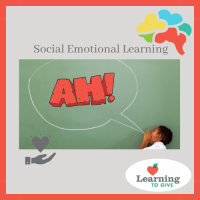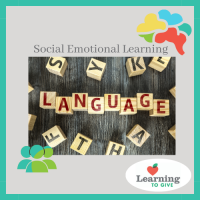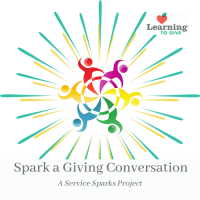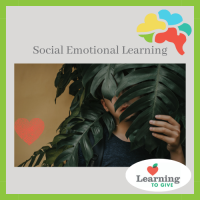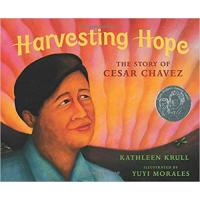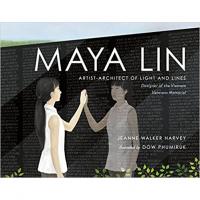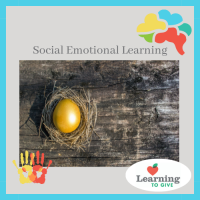"The Shout" is an Everyday SEL practice for encouraging young people to express their authentic emotions and use their emotions to create change. Cierra Kaler-Jones argues that “Righteous anger has long been used as a tool to fuel movements that have and continue to propel our nation forward towards justice. To tell students to not harness their anger is to tell them their rage isn’t warranted.”
Language holds the power to unite or divide us, and we may unknowingly use language that excludes or offends our listeners. The language used at home, on TV, in Music, and in the Media often contains insensitive or divisive language with the potential to offend. Youth can identify and make an effort to use more inclusive language instead. By managing their own language, youth can serve as models for their peers and others in their community.
Ignite meaningful action that lights up the world through "Service Sparks" youth projects! Spark a conversation about giving and generosity. Follow this simple guide to talk about generous action for the good of all. One conversation may spark another and spread generosity like ripples in the larger community. A great lead-up to the holidays and #GivingTuesday.
Identity self-portraits create opportunities for self-understanding by encouraging youth to reflect on different facets of their identities. Participants illustrate their visible and invisible identity markers, reflect upon how these identities interact with how they perceive themselves and how they are perceived by others.
This books tells the real-life journey of Cesar Chavez, who moved with his childhood family of Mexican heritage from farm to farm as migrants, trying to earn enough money for food and housing. When he grew up, Chavez spoke up for fairness in pay and housing for farm workers, and he became a...
This book tells how artist Maya Lin formed the idea for her most famous artwork, the Vietnam Veterans Memorial. She thought carefully about the meaning of the work, the form, and how she wanted people to feel. The Vietnam Veterans Memorial is so powerful, when people visit the art they...
This activity encourages youth to discuss the power of privilege. Participants will understand how their perspectives, identity, and values influence their decisions in this activity. They will also understand that privileges are social constructs, A social construct is something that exists not in reality, but as a result of human interaction. It exists because humans agree that it exists.
Youth reflect on the lessons they have learned through building cultural competence in this unit. They identify an adult they trust to have critical, or difficult, conversations.
- Read more about Critical Conversations
- Log in or register to post comments
Through the voices of an immigrant and refugee, youth gain empathy and understanding of the experience of leaving your home for a new place.
- Read more about Immigrants and Refugees
- Log in or register to post comments
Cultures are sometimes represented through clothing items like head wear or colors. These clothing items can be very meaningful and important, and it is respectful to learn about others and what their cultural expression means to them. It is never okay to mock someone for what they wear or to say they shouldn't wear it because it is different. This lesson raises awareness of the meaning of cultural expression and the danger of stereotypes.
- Read more about Culture-Based Apparel
- Log in or register to post comments
